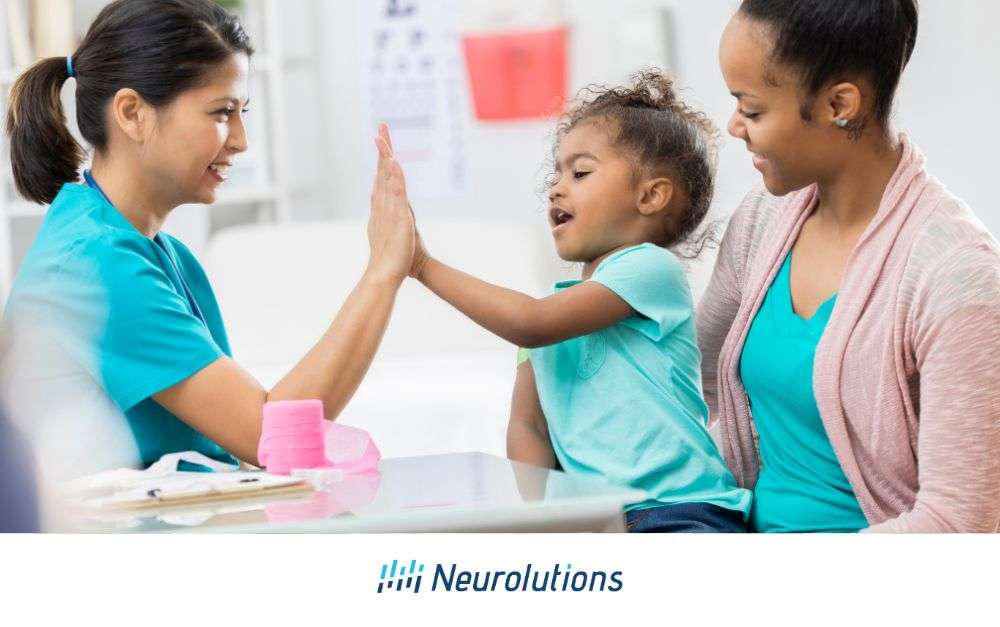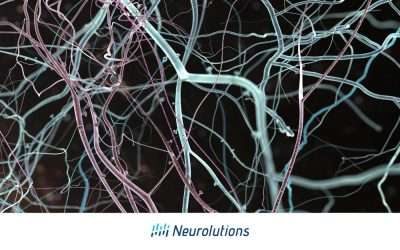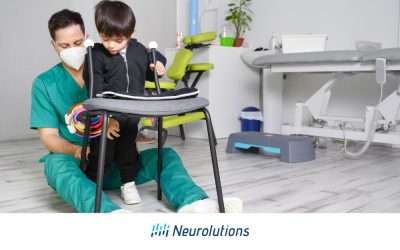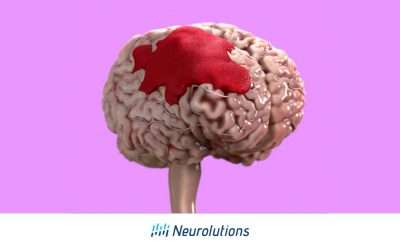Pediatric strokes can be ischemic (resulting from blood clots) or hemorrhagic (due to brain bleeding), stemming from diverse factors and potentially resulting in long-term disabilities if not promptly addressed.
Childhood or pediatric stroke is a serious condition with long-lasting consequences that extend beyond childhood. There are two types of pediatric stroke: ischemic stroke and hemorrhagic stroke. Ischemic strokes are almost always caused by a clot in the blood that travels to the brain or forms in a blood vessel in the brain, and hemorrhagic strokes are caused by bleeding in the brain (1). The causes of pediatric stroke vary and can include both genetic and environmental factors that can occur in utero, during birth or childhood (2).
Pediatric stroke occurs in 25 of every 100,000 newborns, and in 12 of every 100,000 children under the age of 19 (3). If treatments and interventions begin quickly after the stroke, the effects can sometimes be reversed. However, pediatric stroke can lead to developmental delays and even lifelong disabilities (4).
Identifying Pediatric Stroke: Early Signs and Symptoms
Stroke symptoms in young children can be hard to spot. Common signs include seizures, breathing pauses, and feeding issues in babies, while older kids may show paralysis, speech problems, and vision issues.
While stroke symptoms in older children can be similar to those in adults, recognizing them in younger children can be challenging. This is especially true in newborns and babies, as symptoms could be mistaken for other health issues. The most common signs in newborns are seizures, pauses in breathing, and feeding problems (5). Older infants may have seizures, a sudden onset of persistent drowsiness, or can be seen crawling using only one side of the body.
In children, the most common signs include (6):
- Paralysis or weakness along one side of the body
- Difficulty speaking or swallowing
- Sudden onset of cognitive changes in memory, judgment, or problem-solving
- Sudden onset of vision problems
Categorizing Pediatric Stroke by Age:
Pediatric strokes are divided into perinatal (around birth) and childhood strokes (up to age 18), with specific care needed for each age group.
Pediatric strokes are classified into two categories: perinatal stroke and childhood stroke. Perinatal stroke refers to strokes occurring from 28 weeks before birth until 28 days after birth, while childhood stroke is defined as strokes occurring from 29 days of age up to 18 years old (7). The age at which the stroke occurs is significant, as some pediatricians specialize in one of two age groups.
Causes and Risk Factors of Pediatric Stroke
Heart and blood vessel problems are the main causes of pediatric stroke. Other risk factors include genetic disorders, infections, and injuries.
The leading causes of pediatric stroke are heart and blood vessel abnormalities. These conditions can be hereditary or result from birth defects. Strokes in children can also be triggered by an acquired heart disease resulting from infection or injury (8). Additionally, a significant cause of pediatric strokes can be arteriovenous malformations (AVMs), which are abnormal tangles of blood vessels in the brain or spinal cord (9). Arteries are like highways that carry oxygen-rich blood from the heart to the body’s cells, while veins are like roads that bring oxygen-depleted blood back to the heart and lungs. When AVMs interfere with this process, they can lower the amount of oxygen that reaches the brain tissues.
Certain disorders that affect the body’s metabolism can also increase the risk of ischemic strokes in children and adolescents. Some of these disorders are hereditary, and some can occur due to birth defects. In order to enable timely intervention and treatment, genetic testing of the parents can help identify these conditions early on. Notable inherited disorders associated with pediatric stroke risk include (10, 11):
- Mitochondrial encephalomyopathy
- Urea cycle defects
- Fabry disease
- Sickle cell disease
- Moyamoya disease
- Hemophilia
- Gene-linked cerebral arteriopathies
Non-inherited causes of pediatric stroke include infection, poor prenatal nutrition, injury during birth, childhood injuries, dehydration, and high blood pressure (12). A significant cause that stands out from this list is bacterial meningitis, which is an infection of the nervous system. A recent study revealed that one-third of children diagnosed with bacterial meningitis experience a stroke (13).
It’s important to note that a combination of genetic, birth, and environmental factors can increase the risk of stroke. For instance, a child with an AVM may be more likely to have a stroke from a minor head injury compared to a child with an AVM who does not experience such an injury.
Diagnostic Procedures
Early diagnosis is crucial, especially for pediatric stroke. This often involves imaging tests like CT scans and MRIs, but additional tests may also be needed to check heart function, blood issues, and brain activity.
Early detection and prevention are key goals of diagnostic exams for strokes in infants and children. By diagnosing and treating any underlying conditions, strokes can often be prevented altogether. In newborns, rapid diagnosis and treatment may actually reverse the impact of a stroke on the brain (14). In children over one month old, imaging tools such as CT scans and MRI are used to diagnose a pediatric stroke (15)
Depending upon the underlying cause of the stroke, further tests may include (16):
- Heart and blood vessel tests using an EKG, echocardiogram, or a Holter heart monitor to check how the heart is working
- Blood tests to find out if there are problems with blood clotting, Sickle Cell Disease, infections in the blood, or other blood disorders
- A lumbar puncture to check blood and fluids around the brain and spinal cord for signs of infection or bleeding
- Electroencephalogram (EEG) to check for signs of seizure activity in the brain
Not only are diagnostic tools used to diagnose a stroke, but they also help rule out conditions that can mimic stroke symptoms, like brain tumors. Identifying the correct cause is crucial for determining the most effective treatment approach.
Treatment Options for Pediatric Stroke
Treatment for pediatric stroke is broken into two phases: immediate care and long-term management. Treatment options can vary from dissolving clots, medication, surgery, and rehabilitation therapies.
Treatment for pediatric stroke depends upon the type and cause of stroke. It’s usually divided into two phases: immediate care and long-term management (17). For ischemic strokes, intravenous (IV) medication is usually administered to dissolve blood clots. In hemorrhagic strokes, the treatment varies depending on the cause, which could be trauma, an arteriovenous malformation (AVM), or a blood-clotting disorder. Surgery is the usual treatment for a hemorrhagic stroke caused by AVM or trauma.
Emergency treatment for newborns with stroke due to a blood clot can include the following: controlling and management of seizures, ensuring proper oxygen supply, and addressing dehydration or anemia if present (18). Children with sickle cell disease (SCD) are often treated with blood transfusions to prevent stroke, as SCD can lead to blood clots. Another treatment option for children is bone marrow transplantation. There are also new gene-editing techniques that are being developed to fix the gene that causes Sickle Cell Disease (19).
The Necessity of Rehab Therapy after Stroke:
Rehabilitation therapies like physical, occupational, and cognitive therapy help children recover and improve their physical and mental abilities after a stroke.
Physical therapy (PT), occupational therapy (OT), and cognitive therapy are important for children recovering from stroke. This is because a stroke often results in paralysis or weakness along one side of the body as well as difficulties with attention or concentration. Tailoring therapy to meet the child’s developmental stage and needs is essential for maximizing physical and emotional well-being. For example, PT and OT can help children work through different types of play to improve hand and finger dexterity.
Learn more about rehabilitation and other treatments for post-stroke recovery on the Neutolutions Stroke Rehab and Recovery blog!
Impact of Stroke on Child Development
Children who have a stroke may face learning, social, and physical challenges. They might need extra support from educators to help with these difficulties.
Pediatric stroke can lead to developmental delays and challenges in learning, communication and socialization. Infants under one year old and children aged six and older tend to experience the most significant negative effects on their cognitive development. These children may need special support in the classroom to help them cope with the physical and learning challenges they face (21). These challenges can include (20):
- Difficulty with learning to walk or walking
- Vision impairments that can increase the risk of accidents and injuries while playing
- Difficulty learning to play with other children
- Difficulties with speaking or reading
- Difficulties with thinking processes, such as memorization or problem-solving
- Difficulties with learning to self-manage emotions and mood
- Social and/or emotional impacts
Preventive Measures and Management
Preventing pediatric stroke involves regular check-ups for at-risk babies, treating congenital heart disease early, and addressing any other health issues promptly.
For pregnant women who have experienced complications, such as eclampsia, there is an increased risk that their baby may have a stroke before, during, or shortly after birth (22). Eclampsia is a condition where seizures occur during a woman’s pregnancy or shortly after giving birth. Ultimately, this means that newborns and infants born to mothers with such complications may need more frequent medical check-ups. Comprehensive medical evaluations are important for children with symptoms that indicate a risk of pediatric stroke and could prevent premature death or lifelong disability.
Congenital heart disease (CHD) affects 1% of all newborns, and it is the most common congenital abnormality (23). If left untreated, CHD can lead not only to pediatric stroke, but also to early heart attacks. Early treatment for CHD can prevent strokes and/or heart attacks, improving the child’s quality of life.
Conclusion – Key Points to Remember
Early treatment and preventive measures are essential for better outcomes for pediatric stroke survivors.
Pediatric stroke is a rare but very serious health disorder, ranking as the sixth leading cause of death in children and requires immediate medical treatment (24). The majority of pediatric strokes are ischemic, caused by blood clots (25). However, hemorrhagic strokes resulting from brain bleeding can also happen.
Various factors such as genetic, congenital, or environmental causes contribute to strokes in children, with heart defects increasing the risk (26). Strokes can lead to developmental delays and disabilities emphasizing the importance of rehabilitation programs encompassing physical, occupational, and cognitive therapy.
Overall, strokes in children can result in long-term disabilities that may affect educational progress, necessitating additional school-based support. However, by implementing preventive measures, such as early diagnosis and treatment, a child may preserve their quality of life and independence.
References:
- Johns Hopkins Medicine [Baltimore, MD]. Pediatric Stroke. Webpage: https://www.hopkinsmedicine.org/health/conditions-and-diseases/stroke/pediatric-stroke
- University of Pittsburgh Medical Center (UPMC) Children’s Hospital of Pittsburgh [Pittsburgh, MD]. Pediatric Stroke Types, Causes, and Symptoms. Webpage: https://www.chp.edu/our-services/brain/neurology/stroke-program/causes-and-symptoms#:~:text=Fundamental%20causes%3A,syndrome%2C%20and%20other%20cerebrovascular%20anomalies.
- Children’s Hospital of Philadelphia [Philadelphia, PA]. Webpage: https://www.chop.edu/conditions-diseases/pediatric-stroke
- Greenham M, Gordon A, Anderson V, et al. (2016). Outcome in Childhood Stroke. 47(4): 1159-1164. Stroke Webpage: https://www.ahajournals.org/doi/10.1161/STROKEAHA.115.011622#:~:text=Conclusions-,Stroke%20is%20among%20the%20top%2010%20causes%20of%20death%20in,%2C%20motor%2C%20and%20cognitive%20impairments.
- Boston Children’s Hospital [Boston, MA]. Neonatal Stroke. Webpage: https://www.childrenshospital.org/conditions/neonatal-stroke#:~:text=The%20most%20common%20symptom%20of,side%20of%20the%20body%20(hemiparesis)
- Heart&StrokeTM [Heart and Stroke Foundation of Canada, Toronto, Canada]. Stroke in children (pediatric stroke). Webpage: https://www.heartandstroke.ca/stroke/what-is-stroke/stroke-in-children
- Jankovic M, Petrovic B, Novakovic I, et al. (2022). The Genetic Basis of Strokes in Pediatric Populations and Insight into New Therapeutic Options. International Journal of Molecular Sciences 23(3): 1601. Webpage: https://www.ncbi.nlm.nih.gov/pmc/articles/PMC8835808/#:~:text=Furthermore%2C%20a%20stroke%20can%20be,and%2018%20years%20%5B4%5D.
- Sinclair AJ, Fox CK, Ichord RN, et al. (2015). Stroke in children with cardiac disease: Report from the International Pediatric Stroke Study Group Symposium. Pediatric Neurology 52(1): 5-15. Webpage: https://www.ncbi.nlm.nih.gov/pmc/articles/PMC4936915/
- University of California at San Francisco (UCSF) Benioff Children’s Hospitals [San Francisco, CA]. Arteriovenous malformations. Webpage: https://www.ucsfbenioffchildrens.org/conditions/arteriovenous-malformations#:~:text=Arteriovenous%20malformations%20(AVMs)%20are%20abnormal,strokes%20in%20children%20and%20adolescents.
- Jeong G, Lim BC, and Chae JH. (2015). Pediatric Stroke. Journal of Korean Neurosurgical Society 57(6): 396-400. Webpage: https://www.ncbi.nlm.nih.gov/pmc/articles/PMC4502234/
- Kirkham FJ, and Lagunju IA. (2021). Epidemiology of Stroke in Sickle Cell Disease. Journal of Clinical Medicine 10(18): 4232. Webpage: https://www.ncbi.nlm.nih.gov/pmc/articles/PMC8469588/
- Johns Hopkins Medicine [Baltimore, MD]. Stroke in Children. Webpage: https://www.hopkinsmedicine.org/health/conditions-and-diseases/stroke/stroke-in-children
- Dunbar M, Shah H, Shinde S, et al. (2018). Stroke in Pediatric Bacterial Meningitis: Population-Based Epidemiology. Pediatric Neurology 89:11-18. Webpage: https://pubmed.ncbi.nlm.nih.gov/30392967/
- Abgottspon S, Thaqi Q, Steiner L, et al. (2022). Effect of Age at Pediatric Stroke on Long-term Cognitive Outcome. Neurology 98(7): e721-e729. Webpage: https://www.ncbi.nlm.nih.gov/pmc/articles/PMC8865894/#R14
- Cleveland Clinic [Cleveland, OH]. Pediatric Stroke. Webpage: https://my.clevelandclinic.org/health/diseases/pediatric-stroke
- Stanford Medicine Children’s Health [Stanford, CA]. Stroke in Children. Webpage: https://www.stanfordchildrens.org/en/topic/default?id=stroke-in-children-134-81
- Cincinnati Children’ Hospital Medical Center [Cincinnati, OH]. Stroke, Childhood. Webpage: https://www.cincinnatichildrens.org/health/s/stroke
- Ferriero DM, Fullerton HJ, Bernard TJ, et al. (2019). Management of Stroke in Neonates and Children: A Scientific Statement From the American Heart Association/American Stroke Association. Stroke 50: e51-e96. Webpage: https://www.ahajournals.org/doi/10.1161/STR.0000000000000183
- Harris E. (2024). Sickle Cell Disease Approvals Include First CRISPR Gene Editing Therapy. Journal of the American Medical Association (JAMA)331(4): 280. Webpage: https://jamanetwork.com/journals/jama/article-abstract/2813761#:~:text=Casgevy%E2%80%94the%20CRISPR%2DCas9%20gene,preventing%20painful%20vaso%2Docclusive%20crises.
- Johns Hopkins Medicine [Baltimore, MD]. Pediatric Stroke. Webpage: https://www.hopkinsmedicine.org/health/conditions-and-diseases/stroke/pediatric-stroke#:~:text=Depending%20on%20where%20in%20the,your%20child’s%20thinking%20or%20emotions.
- Abgottspon S, Thaqi Q, Steiner L, et al. (2022). Effect of Age at Pediatric Stroke on Long-term Cognitive Outcome. Neurology 98(7): e721-e729. Webpage: https://www.ncbi.nlm.nih.gov/pmc/articles/PMC8865894/#R14
- Bushnell C, and Chireau M. (2011). Preeclampsia and Stroke: Risks during and after Pregnancy. Stroke Research and Treatment 2011: 858134. Webpage: https://www.ncbi.nlm.nih.gov/pmc/articles/PMC3034989/#:~:text=The%20hazard%20ratio%20for%20all,of%20coronary%20heart%20disease%2C%20however.
- Mandalenakis Z, Rosengren A, Lappas G, et al. (2016). Ischemic Stroke in Children and Young Adults With Congenital Heart Disease. Journal of the American Heart Association (JAHA) 5: e003071. Webpage: https://www.ahajournals.org/doi/10.1161/JAHA.115.003071
- Children’s Hospital of Philadelphia [Philadelphia, PA]. Pediatric Stroke. Webpage: https://www.chop.edu/conditions-diseases/pediatric-stroke
- Boston Children’s Hospital [Boston, MA]. Stroke in Children. Webpage: https://www.childrenshospital.org/conditions/stroke
- Mayne EW, Mailo JA, Pabst L, et al. (2022). Pediatric Stroke and Cardiac Disease: Challenges in Recognition and Management. Seminars in Pediatric Neurology 43: 100992. Webpage: https://www.ncbi.nlm.nih.gov/pmc/articles/PMC9719802/




